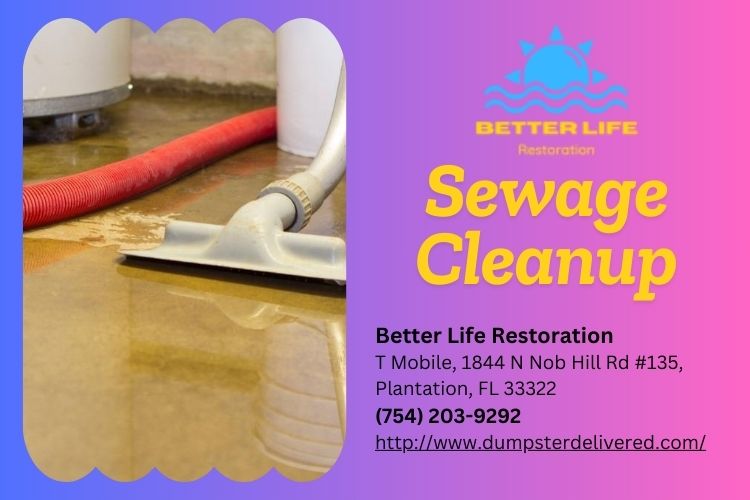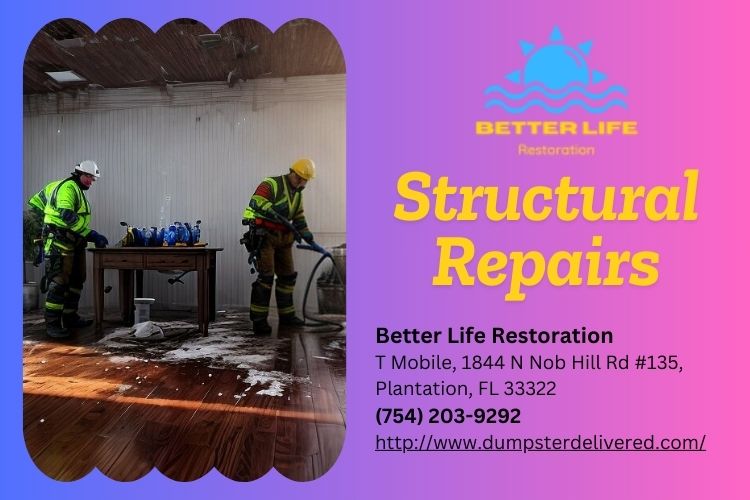Flooding can be a catastrophic and stressful event for homeowners, particularly in areas prone to heavy rain or hurricanes, like Plantation, Florida. Once the waters recede, the next pressing question arises: should you handle the flood damage restoration yourself or hire a professional service? This comprehensive guide will explore both options, weighing their pros and cons to help you make an informed decision.
Understanding Flood Damage Restoration
What is Flood Damage Restoration?
Flood damage restoration refers to the process of cleaning up and repairing properties affected by flooding. This includes water extraction, drying out affected areas, disinfecting surfaces, and restoring structures to their pre-flood condition. The aim is not only to repair visible damage but also to prevent long-term issues such as mold growth.
The Importance of Timely Action
When it comes to flood damage restoration, time is of the essence. Water can cause significant harm within just 24 hours. Structural integrity is at risk, mold can begin to grow, and personal belongings can be irreparably damaged. Therefore, acting quickly is crucial.
DIY vs. Professional Flood Damage Restoration: Making the Right Choice for Your Plantation Home
Choosing between DIY methods and hiring a professional flood damage restoration service requires careful consideration of several factors.
Pros of DIY Flood Damage Restoration
Cost Savings
One of the most significant advantages of DIY restoration is the potential cost savings involved. You won’t have to pay for labor costs associated with hiring professionals.
Full Control
Handling the restoration yourself allows you complete control over every step of the process—from water removal to repairs.
Flexibility
You can choose your own schedule without having to wait for contractors’ availability.
Cons of DIY Flood Damage Restoration
Lack of Expertise
Most homeowners lack specialized knowledge regarding proper flood damage techniques and tools needed for effective restoration.
Time-Consuming
The process can be tedious and may take longer than anticipated—especially if you’re learning as you go along.
Potential Health Risks
Without proper protective gear or training, there’s a chance that you might expose yourself to harmful bacteria or mold spores during cleanup.
Pros of Hiring Professional Flood Damage Restoration Services
Expert Knowledge & Experience
Professionals possess specialized training and experience that allows them to identify hidden problems that an untrained eye might miss.
Advanced Equipment
Professionals use industrial-grade equipment designed for efficient water extraction and drying processes—far superior than common household tools.
Insurance Assistance
Many professional services work directly with insurance companies, helping streamline claims processes which can alleviate some financial burden on homeowners.
Cons of Hiring Professional Services
Higher Costs
The most significant drawback is usually financial; hiring professionals can be quite expensive due to labor costs and materials needed for repairs.
Less Control Over Process
When working with professionals, homeowners may feel less in control over decisions made during restoration tasks.
Assessing Your Situation Before Making a Decision
Before jumping into either route, consider these questions:
- How severe was the flooding? Do you have prior experience with home repairs or water damage? Are there hazardous materials present (like sewage)? How quickly do you need the restoration completed?
Taking stock of your situation will provide clarity on which path might be best suited for your needs.
Preparation for Flood Damage Restoration
Gather Necessary Tools & Materials (For DIY)
If you're leaning toward a DIY approach, it's crucial to gather all necessary tools beforehand:
- Heavy-duty trash bags Wet/dry vacuum Dehumidifiers Mops and buckets Protective gear (gloves, masks)
Know What To Expect When Hiring Professionals
If you're opting for a professional service instead:
Research local companies specializing in flood damage restoration. Request quotes from multiple providers. Ask about their certifications and experience levels. Check online reviews and testimonials from previous clients.The Step-by-Step Process of Flood Damage Restoration
DIY Step-by-Step Guide: How To Restore Your Home After Flooding
Better Life Restoration1. Safety First
Before entering your home post-flooding:
- Ensure electrical systems are safe. Wear protective clothing.
2. Remove Standing Water
Use pumps or wet/dry vacuums to eliminate standing water quickly.
3. Dry Out Affected Areas
Set up dehumidifiers and fans in all affected rooms until everything is dry—this often takes several days depending on severity.
4. Clean & Disinfect Surfaces
Use bleach solutions or other disinfectants on hard surfaces that have come into contact with floodwaters.
5. Assess Damaged Items
Determine what items can be salvaged versus what needs disposal (e.g., carpets or textiles).
6. Repair Structural Issues
Begin repairing drywall or flooring as necessary once everything has dried completely.
Professional Service Workflow: What Happens When You Hire Experts?
1. Initial Assessment
Professionals will conduct an assessment upon arrival—identifying areas requiring attention based on severity levels.
2. Water Extraction
They’ll utilize specialized equipment designed for swift removal of standing water from your property.
3. Drying & Dehumidification
Using industrial-sized fans/dehumidifiers ensures moisture levels return back down quickly while preventing mold growth.
4. Cleaning & Sanitization
Experts will clean all affected surfaces thoroughly using appropriate disinfectants tailored for flood conditions.
5. Repairs & Restorations
Finally they’ll assist with any necessary repairs including replacing drywall/insulation if needed!
Mold Prevention Techniques Post-Flooding
Regardless if you choose DIY methods or hire professionals—mold prevention should always remain top-of-mind!
Tips:
- Keep humidity levels low (below 50%). Regularly check hidden corners where moisture could linger. Use exhaust fans in bathrooms/kitchens after use!
FAQ Section: Common Queries About Flood Damage Restoration
What Should I Do Immediately After a Flood?
First things first—ensure safety! Turn off electrical systems before entering flooded areas; assess damages when safe enough too!
How Long Does It Take For Mold To Grow After A Flood?
Typically within 24–48 hours; thus why immediate action is critical!

Can Insurance Cover Flood Damage Repairs?
Yes! However coverage depends upon specific policies so always check terms/details beforehand!
Is It Safe To Stay In My House After A Minor Flood?
Only if deemed safe by authorities; otherwise seek temporary shelter until assessments occur!
What’s The Average Cost Of Professional Restoration Services?
Costs vary widely but generally range anywhere from $1500-$5000 depending on severity/location/etc…
Do I Need Special Licensing For DIY Work On My Property?
Not unless local laws dictate otherwise; however always consult building codes/regulations before proceeding!
Conclusion: Weighing Your Options Wisely
When faced with flooding in your plantation home—it’s essential that one carefully weighs both DIY versus professional flood damage restoration services before making decisions! While tackling it oneself may save money upfront—there are risks involved including health hazards/lack expertise which could lead costly mistakes down line! Conversely hiring experts provides peace-of-mind knowing trained individuals handle job correctly however comes at higher price point typically too! Ultimately making choice boils down personal comfort level/circumstances surrounding individual homes impacted by floods themselves!
Contact Us
Better Life Restoration
Address: T Mobile, 1844 N Nob Hill Rd #135, Plantation, FL 33322

Phone number: (754) 203-9292